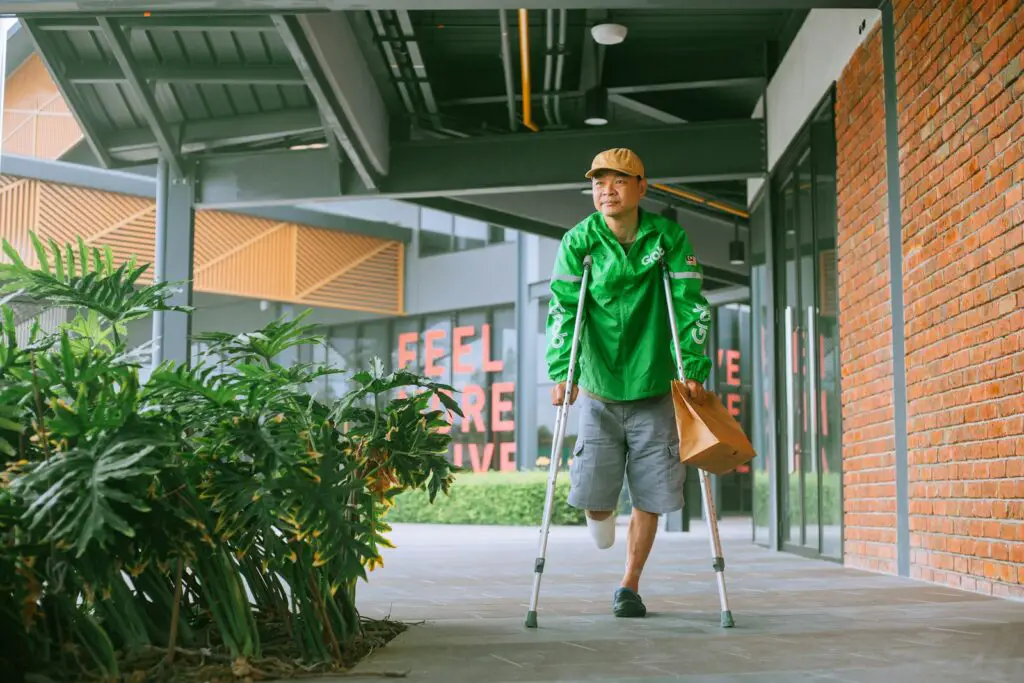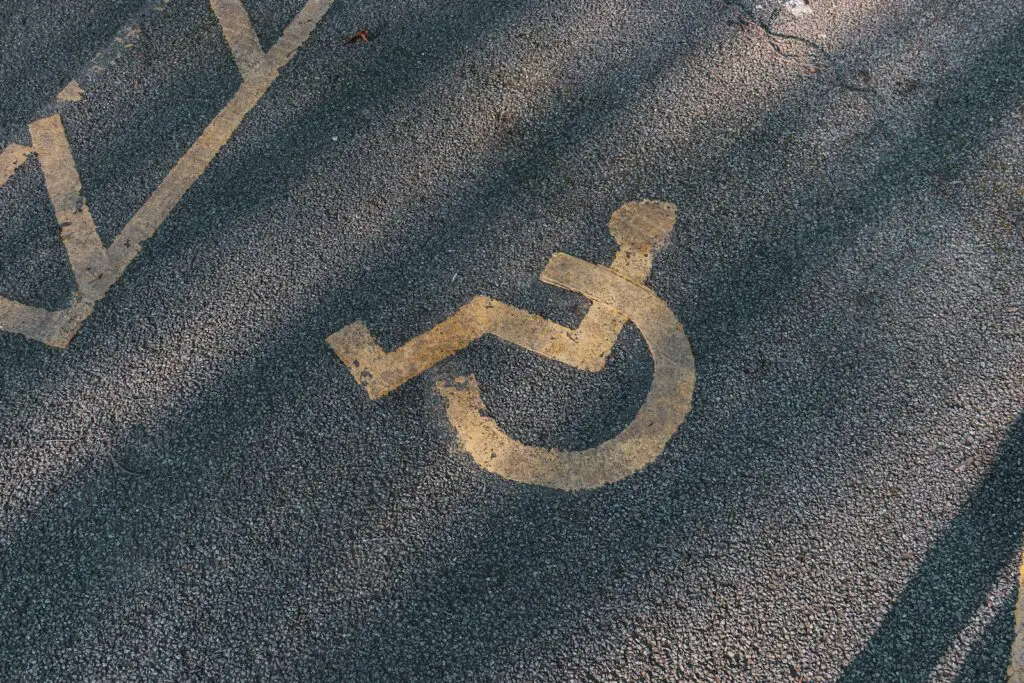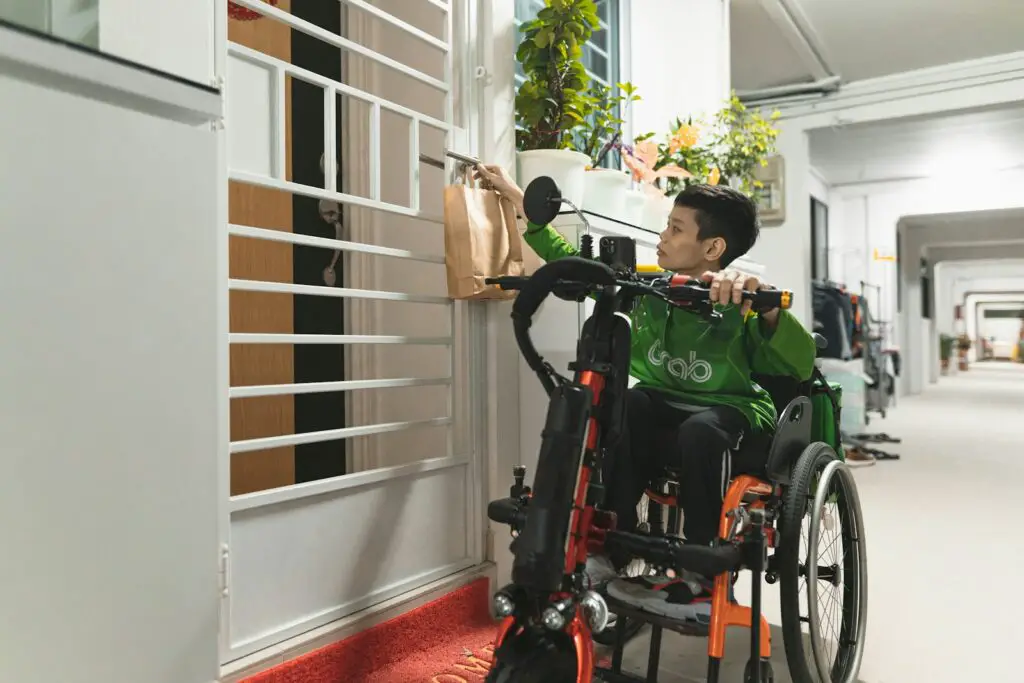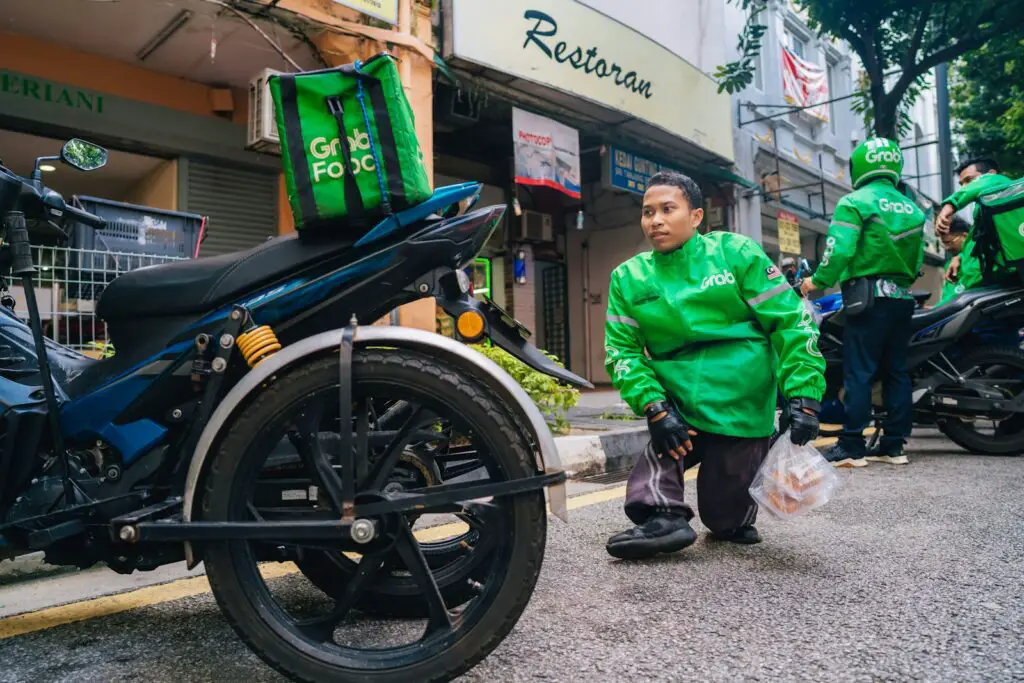Introduction: Why Traveling with a Disability is Empowering
Traveling with a disability isn’t just about getting from Point A to Point B—it’s a powerful act of self-empowerment. When you hit the road and navigate different places, you’re breaking down barriers and showing the world—and yourself—that you are capable.

Why It’s Empowering:
- Boosts Confidence: Every journey you take is a testament to your ability to adapt and conquer challenges. Each successful trip becomes a reminder of your capabilities.
- Increases Independence: Scheduling flights, booking hotels, and planning activities on your own can drastically boost your sense of independence. You’ll realize that you are in control of your life.
- Challenges Stereotypes: By traveling, you get to challenge and change society’s often limited perceptions about what people with disabilities can do.
- Creates A Sense Of Accomplishment: Navigating unfamiliar terrains, public transport, or different cultures are massive accomplishments. Each new experience adds to your repertoire of achievements.
- Expands Your Comfort Zone: Traveling forces you to step outside of your comfort zone, helping you grow and adapt to new environments. You become more flexible and open-minded.
Quick Tips:
- Research: Spend time researching accessible travel options.
- Plan Ahead: Make sure to have all necessary medications and equipment.
- Stay Connected: Inform friends and family about your travel plans.
- Stay Positive: Remember, every challenge overcome is a lesson learned.
Blockquote:
Traveling is more than the seeing of sights; it is a change that goes on, deep and permanent, in the ideas of living. — Miriam Beard
Traveling with a disability pushes you to reconsider what’s possible and helps you discover new strengths you didn’t know you had. The world is full of adventures waiting for you. You are capable of navigating any obstacles and enriching your life with diverse experiences.
Pre-Trip Research: Choosing Accessible Destinations
When planning an accessible trip, the first step is to choose your destination wisely. Not all places have the same level of accessibility, and some may present unique challenges. Here are some tips to help you select a destination that works for you:
- Research Accessibility Ratings:
- Check websites and forums that focus on accessible travel.
- Look for user reviews and ratings that mention disability access.
- Some travel blogs and YouTube channels specifically cater to accessible travel.
- Check Public Transportation Options:
- Investigate whether the city has accessible public transit options.
- Many cities provide detailed info on accessible buses, trains, and even taxis.
- Look at the transit authority’s website for specifics like lift availability and station access.
- Review Accommodation Accessibility:
- Ensure the hotel or rental property is accessible.
- Contact the property directly to ask specific questions about room features.
- Websites like Booking.com and Airbnb often filter for accessible accommodations.
- Look for Tourist Attractions:
- Make a list of must-see attractions and research their accessibility.
- Many attractions offer detailed info on their website about accessible entrances, paths, and facilities.
- Contact customer service if the info provided is not detailed or clear.
- Consider Weather and Terrain:
- Think about how the weather and landscape could affect mobility.
- Cities with extreme weather might make getting around harder.
- Consider destinations with a flat terrain for easier navigation.
- Check Local Healthcare Facilities:
- Know where the nearest hospital and pharmacies are located.
- Research medical facilities that cater to your specific needs.
- Look for reviews of the local healthcare services to ensure quality care.
- Consult Social Media Groups:
- Join Facebook groups or other communities focused on accessible travel.
- Ask for recommendations and personal experiences from others.
- Instagram hashtags like #AccessibleTravel can also provide insights and ideas.
Traveling with a disability means you’ll need to put in a bit more planning, but choosing a destination that caters to your needs can make all the difference. Set yourself up for success by doing thorough research and tapping into resources that provide detailed information on accessibility.

Booking Flights: How to Find and Secure Accessible Air Travel
Booking flights with a disability doesn’t have to be a hassle if you know what to look for. Here’s how you can find and secure accessible air travel:
- Research Airlines:
- Check airlines’ policies on passengers with disabilities.
- Look for reviews and recommendations online.
- Know Your Rights:
- The Air Carrier Access Act protects you. Familiarize yourself with it.
- You’re entitled to assistance in boarding and deplaning.
- Communicate Your Needs:
- Contact the airline directly.
- Be specific about your requirements—whether it’s an aisle seat, extra legroom, or assistance with boarding.
- Choose the Right Flight:
- Non-stop flights reduce the hassle of changing planes.
- Early morning flights often mean less crowd and more attentive service.
- Book Directly with the Airline:
- It’s easier to communicate your needs.
- Airlines can directly ensure accommodations are noted in your booking.
- Inform at Check-in:
- Arrive early.
- Verify that your special requests have been noted.
- Packing Smart:
- Pack all your essential medications and medical supplies in your carry-on.
- Label everything clearly.
- Consider using packing cubes for better organization.
Special Assistance
- Wheelchairs:
- Request at booking if you need a wheelchair at the airport.
- Inform them if you’ll be bringing your own and if it’s electric or manual.
- Guide Dogs:
- Verify the requirements and ensure you have all the necessary documentation.
- Notify the airline well in advance about flying with a guide dog.
On-Board Comfort
- Pre-Boarding:
- Take advantage of pre-boarding to get settled in comfortably.
- Take Care of In-Flight Devices:
- Bring any travel cushions, braces, or other devices that help keep you comfortable.
- Communicate with Flight Crew:
- Ensure the crew is aware of any assistance you might need during the flight.
Lodging Complaints
- Know Where to File:
- If you encounter issues, know that you can file complaints with the airline and Department of Transportation (DOT).
- The airline should have a Complaints Resolution Official (CRO) to handle disability-related issues.
Keep these tips handy, and your air travel experience will be smoother and more enjoyable. Happy travels!
Packing Essentials: Must-Have Items for Travelers with Disabilities
Traveling with a disability can be enjoyable and stress-free if you pack the right essentials. Having the necessary items ensures comfort, safety, and independence. Here’s your ultimate packing guide:
Mobility Aids
- Wheelchair/Walker: Always bring your own if you use one; you’re familiar with it.
- Cane/Crutches: Lightweight and collapsible options are perfect for travel.
- Portable Ramp: Useful if the destination isn’t fully accessible.

Accessible Navigation Tools
- GPS Device/Smartphone App: Something like Google Maps to find accessible routes.
- Hotel Accessibility Info: Print or save information for accessible rooms and facilities.
Medical Supplies
- Medication: Pack enough to last your entire trip, plus extra in case of delays.
- Medication Organizer: Helps keep track of doses.
- Doctor’s Note: Necessary for carrying medications, especially needles or liquids.
Personal Care Items
- Adapted Toiletries: Includes items like a long-handled sponge or electric toothbrush.
- Portable Shower Chair: Ensures you can bathe comfortably if accommodations aren’t adaptive.
Comfort Items
- Compression Socks: Reduce swelling during long flights or drives.
- Travel Pillow/Blanket: Custom support items to ensure comfort on the go.
- Lightweight Jacket: Changeable weather can affect your comfort levels.
Emergency Supplies
- First Aid Kit: Basic kit including band-aids, antiseptic wipes, and gauze.
- Emergency Contact Info: Keep this readily available, including medical contacts.
Documentation
- IDs and Passports: Of course, but also carry copies.
- Travel Insurance Details: Policies covering medical emergencies.
- Accessibility Cards: Documentation that may be needed to prove your requirements.
Technology
- Chargers/Battery Packs: Always have a way to recharge your devices.
- Tablet/E-book Reader: Keeping entertained is essential for long waits.
Snacks and Hydration
- High-energy Snacks: Granola bars, nuts, or dried fruit for quick energy boosts.
- Refillable Water Bottle: Ensure you stay hydrated, especially during long waits or travel segments.
Patience and preparedness are key. Having these essentials ensures you’re ready for almost anything. Happy travels!
Accommodation: Finding Disability-Friendly Hotels and Rentals
When you’re planning a trip, finding the right place to stay is crucial. Here are some handy tips to help you find disability-friendly accommodations:
Research and Read Reviews
First off, hop online and do some digging. Websites like TripAdvisor, Booking.com, and Airbnb have sections specifically for accessibility reviews.
- Look for properties with high ratings in accessibility.
- Read the comments about accessibility features. Sometimes the description and reality don’t match up.
Use Specialized Booking Sites
There are websites dedicated to disability-friendly accommodations. These sites usually offer detailed descriptions and photos:
- DisabledHolidays.com
- AccessibleGO.com
- Handiscover.com
Direct Contact
Sometimes it’s best to contact the hotel or property owner directly:
- Call ahead and explain your needs.
- Ask specific questions like, “Are doorways at least 32 inches wide?” or “Is there a roll-in shower?”
- Emailing works too—request photos if you’re unsure.
Consider Location
Think about what you want to do and how close you need to be to those activities. Public transportation can be a barrier:
- Look up nearby accessible transportation options.
- Check if the area is wheelchair-friendly, with ramps and curb cuts.
In-Room Amenities
Specific amenities can make or break your stay:
- Grab bars in the bathroom
- Roll-under sinks and countertops
- Lowered beds, light switches, and peepholes
- Visual and hearing aids like vibrating alarms or visual doorbells

Verify Policies
Some places might have special policies:
- Check their cancellation policy in case something goes wrong.
- Ask about service animal policies if it applies to you.
Use Apps and Online Tools
Several apps can help you find accessible accommodations, like:
- Wheelmap (for accessible places)
- AccessNow (global accessibility information)
Curbside Assistance and Shuttle Services
Inquire if the accommodation offers:
- Curbside assistance for baggage and check-in.
- Shuttle services with wheelchair access.
Be it a grand resort or a cozy Airbnb, finding disability-friendly lodging ensures you’ll have a comfortable and enjoyable stay. Happy travels!
Navigating Transportation: Tips for Accessible Ground Travel
Traveling with a disability doesn’t mean you have to forgo convenience. Here are some wicked cool tips to make your ground travel experience awesome:
- Do Your Homework: Research the public transportation options in your destination city. Not all buses and trains are created equal when it comes to accessibility. Look for ones with low floors, ramps, or elevator access.
- Reserve Accessible Rides: Many taxi and ride-share companies now offer wheelchair-accessible vehicles. Make sure to book in advance, especially during peak hours, to avoid getting stranded.
- Plan Your Route: Use apps like Google Maps or Moovit that offer accessible route options. These apps often let you filter for wheelchair-accessible routes, giving you peace of mind.
- Accessibility Passes and Discounts: Look for special travel passes or discounts available for people with disabilities. Many cities offer reduced fares for accessible travel.
- Communicate Your Needs: When booking any transportation, let the service provider know about your needs upfront. Whether it’s a hotel shuttle or a tour bus, businesses are much more likely to accommodate you if they know in advance.
- Check for Accessibility Features: When booking rental cars, make sure they have essential features like hand controls. Many rental services now offer these options, but availability can vary.
- Bring a Repair Kit: A flat tire on your wheelchair? No problem if you have your trusty repair kit. It’s a small thing that can save you a massive headache.
- Friend or Foe?: Not all sidewalks are disability-friendly. Be prepared for uneven surfaces or lack of curb cuts. Wear comfortable, sturdy shoes if you have mobility issues.
- Emergency Contacts: Keep a list of local emergency contacts, including accessible transportation services. It’s always better to be prepared.
- Accessible Rest Stops: If driving long distances, do a little research to ensure the rest stops on your route are accessible. Some may even have designated areas for wheelchair users.
Pro Tip: Test out any new mobility equipment at home before hitting the road.
You got this! Happy traveling, and may your journeys be as smooth as possible.
Health and Safety: Managing Medications and Emergencies
When traveling with a disability, prepping your meds and having an emergency plan is a lifesaver. Here’s a lowdown on how to manage it all smoothly:
Medications
- Pack Enough Medication: Take more than enough medication for your trip, just in case there are delays.
- Original Packaging: Keep meds in their original packaging with labels intact. This avoids any hassle at security.
- Doctor’s Note: Carry a doctor’s note that explains your medication, including the generic names.
- Organize: Use a pill organizer, and if you have complex medication needs, use a smartphone app to track dosages.
- Temperature Sensitivity: If your meds need to stay cool, pack them in an insulated lunch bag with ice packs.
Emergencies
- Emergency Contacts: List your emergency contacts in your phone and on a piece of paper.
- Medical ID: Wear a medical ID bracelet that shows critical info, like allergies or chronic conditions.
- Know the Numbers: Memorize or write down local emergency numbers, especially when traveling internationally.
- Local Hospitals: Research hospitals and clinics at your destination. Know where to go in case of an emergency.
- Travel Insurance: Invest in travel insurance that covers medical emergencies, including evacuation if needed.
Air Travel Specifics
- Notify the Airline: Inform the airline about your medical needs in advance, especially if you need to carry syringes or liquid meds.
- Security Check: At security, notify TSA officers about your medication and any medical devices.
- Medical Equipment: If you need special equipment, like oxygen, arrange this well ahead of time with the airline.
On-the-Go Tips
- Wearable Alert Systems: Use apps or wearables that can send an alert in case of an emergency.
- Stay Hydrated: Drink plenty of water to avoid dehydration, which can exacerbate certain medical conditions.
- Snacks: Always carry a stash of emergency snacks, especially if you’re diabetic or have specific dietary needs.
Traveling with a disability doesn’t have to be stressful. With solid planning and a good mindset, you’ll navigate through your trip like a pro!
Communication: How to Effectively Communicate Your Needs
Traveling with a disability means you often have to be extra clear when communicating your needs. Here’s how you can do it effectively:
1. Be Specific and Direct
- Clearly state your requirements. Whether it’s wheelchair accessibility or help with luggage, be straightforward.
- “I need assistance with my mobility device” is better than “I might need some help.”
2. Use Simple Language
- Avoid jargon or overly complex terms. Simple, concise sentences work best.
- Instead of saying, “I require an ambulatory device,” you could say, “I need a wheelchair.”
3. Be Prepared
- Make a list of your needs before you travel and keep it handy.
- Having essential information about your disability ready will save time and reduce stress.
4. Utilize Technology
- Use apps or devices that can communicate your needs if verbal communication is tough.
- There are apps that can convert text-to-speech, which can be really handy in different languages.
5. Confirm Your Needs
- Double-check with service providers to ensure they understand your requirements.
- Call ahead to hotels, airlines, or tour operators to remind them about your accommodations.
6. Train Your Travel Companion
- If you’re traveling with someone, educate them on your needs so they can advocate for you.
- Having a backup who knows exactly what to say can be very reassuring.
7. Stay Calm and Patient
- Sometimes people may not immediately understand. It’s okay to repeat yourself.
- Take a breath and keep a positive attitude. A little patience goes a long way.
8. Use Visual Aids
- Show pictures or use cards that describe your needs if necessary.
- Visual aids can often bridge gaps in understanding, especially in a foreign country.
9. Learn Basic Phrases
- If traveling internationally, learn key phrases in the local language related to your needs.
- Even basic words can help in a pinch, such as “help,” “wheelchair,” or “bathroom.”
By using these tips, you can make your travel experiences more accessible and less stressful.
Using Technology: Apps and Gadgets to Make Travel Easier
Planning and executing a trip can be a breeze with the right tech tools. Here’s some handy gear and apps to help make your journey smoother:
- Navigation Apps: Apps like Google Maps and Apple Maps offer accessibility features like voice-guided navigation and the ability to find wheelchair-friendly routes.
- Translation Tools: Google Translate and iTranslate can help you communicate in different languages with both text and voice translations.
- Accessibility Apps: Apps like Wheelmap let you find and rate wheelchair-accessible locations worldwide. Be My Eyes connects you with sighted volunteers for visual assistance.
- Accommodation Apps: Airbnb, Booking.com, and Expedia allow you to filter and find accessible lodging options. Many platforms now feature details on accessible amenities.
- Medical Apps: Pill Reminder apps ensure you never miss a dose, while First Aid by the American Red Cross provides emergency medical info.
- Transport Apps: Uber and Lyft let you request wheelchair-accessible vehicles (WAVs) in many cities. Apps like Moovit provide transit tips and alternate accessible routes.
- Assistant Devices: Voice assistants like Amazon Echo or Google Home can set reminders, check the weather, and even control smart home gadgets if you’ve set this up in advance.
- Portable Chargers: Keep your devices juiced up with portable chargers. Anker and Mophie are reliable brands to consider.
- Wearable Tech: Smartwatches like the Apple Watch can track health metrics, provide GPS navigation, and send quick alerts.
Don’t forget about online forums and social media groups. Sites like Reddit, Facebook, and dedicated travel blogs often share the latest in accessible travel tips and community experiences. If you’re into podcasts, try listening to shows that focus on disability and travel for personalized advice.
Stay connected, stay informed, and let these tech tools help make your journey as seamless as possible.
Travel Companions: The Role of Travel Partners and Support
Having the right travel companion can make a huge difference. A good partner can offer more than just company; they can be your lifeline, your extra set of hands, and your support system. When picking a travel buddy, consider these aspects:
- Trust: Trust is key. Choose someone reliable, who understands your needs and limitations. This person should know your emergency plans and medical needs.
- Patience: Travel can be unpredictable. Your companion should be patient and flexible, ready to adapt to changes and help resolve issues calmly.
- Communication: Clear communication is vital. Make sure both of you are comfortable discussing your needs openly. This helps prevent misunderstandings during the trip.
- Shared Interests: Having shared interests can enhance the experience. Your partner should enjoy activities you both can participate in and appreciate the same travel vibes, be it adventure, culture, or relaxation.
When it comes to support, it isn’t just about a physical presence:
- Planning Together: Collaborate on the itinerary. Your companion can help spot potential hurdles and ensure your travel plans are accessible and enjoyable.
- Handling Luggage: Managing luggage can be tricky, especially if you have mobility issues. Travel partners can take on the heavy lifting or help you navigate crowded places.
- Medical Assistance: It’s crucial they know where to find your medical supplies, how to administer basic aid, and emergency contact details.
- Navigating Public Transport: From booking accessible cabs to figuring out public transport, having someone who can help with logistics takes a lot of stress away.
- Providing Emotional Support: Travel can be stressful. Having someone to share the ups and downs, and keep a positive attitude, makes a world of difference.
Remember, a good travel partner is aware, helpful, and ready to make the journey memorable and enjoyable. Choosing wisely can turn a daunting trip into an exhilarating adventure.
Overcoming Common Challenges: Solutions and Strategies
Traveling with a disability can be daunting, but with a little planning, you can overcome common challenges. Here are some tips and strategies to help make your journey smoother:
Booking Travel and Accommodation
- Inform airlines and accommodations in advance: Let the airline and hotel know about your needs when you make your reservation. This will give them time to prepare and accommodate you properly.
- Request assistance services: Most airports and stations offer mobility assistance, like wheelchairs or electric carts. Be sure to ask for this service ahead of time.
- Choose accessible accommodation: Use websites like Booking.com and Airbnb, which have filters for accessibility needs. Look for reviews from other travelers with disabilities.
Packing Essentials
- Medications: Pack all your medications and bring extra in case of delays. Keep them in their original packaging to avoid issues at customs.
- Medical documents: Have copies of your prescriptions and any necessary medical documents.
- Adaptive equipment: Ensure your mobility aids are in good condition and pack any necessary repair tools.
Navigating Airports and Stations
- Arrive early: Give yourself plenty of time to navigate the airport or station without rushing.
- Use priority lines: Many airports have dedicated security lines for travelers with disabilities. Don’t be afraid to use them.
- Check accessibility options: Airports often have accessible restrooms, lounges, and relief areas for service animals. Ask staff if you can’t find them.
Local Transportation
- Public transit: Research the accessibility of buses, trains, and subways in your destination city.
- Accessible taxis: Pre-book accessible taxis or rideshares to avoid waiting.
- Car rental: If you drive, consider renting an adapted vehicle.
Exploring Your Destination
- Plan accessible routes: Use apps or websites that offer information on accessible attractions and routes.
- Temporary mobility aids: Some destinations offer rental services for wheelchairs, scooters, or other mobility aids.
- Join online forums: Connect with other travelers with disabilities who can share personal tips and experiences about specific destinations.
Dining Out
- Check restaurant accessibility: Call ahead to verify if the restaurant is accessible.
- Inform the staff: Let them know about any dietary requirements or accessibility needs you have.
Traveling with a disability requires more planning but being proactive can help ensure a pleasant trip.
Legal Rights: Understanding Your Rights as a Disabled Traveler
Traveling with a disability doesn’t mean compromising comfort or accessibility. Knowing your legal rights can make your trips smoother. Here’s what to keep in mind:
Air Travel
Under the Air Carrier Access Act (ACAA), airlines must accommodate your needs:
- Advance Notification: You don’t have to notify airlines in advance, but it’s recommended for necessary arrangements.
- Assistive Devices: Airlines must allow you to bring assistive devices like wheelchairs and walkers without additional fees.
- Seating Accommodations: Request specific seats to meet your needs – look for bulkhead seating for more space.
- Service Animals: Airlines must allow service animals; however, different airlines may have documentation requirements.

Public Transportation
The Americans with Disabilities Act (ADA) ensures public transportation is accessible:
- Buses and Trains: Must have lifts or ramps and tactile warning strips for accessibility.
- Paratransit Services: ADA paratransit services provide door-to-door transportation if regular transit isn’t accessible.
- Stations: Accessibility features like elevators, ramps, braille signs, and audio cues are requirements.
Hotels and Accommodations
Hotels must offer accessible rooms per the ADA:
- Reservations: Book early and specify your needs; law requires accessible rooms be guaranteed.
- Common Areas: Ensure public areas like eateries, gyms, and pools are ADA compliant.
International Travel
International travel can vary regarding accessibility standards:
- Research: Investigate the destination country’s accessibility laws. Websites like Mobility International USA offer resources.
- International Airlines: Look for airlines compliant with the Convention on the Rights of Persons with Disabilities (CRPD).
Communication Needs
You have the right to accessible communication:
- Websites and Apps: Service providers should offer accessible websites and apps.
- In Person: Request auxiliary aids like sign language interpreters or written materials if necessary.
Car Rentals
Rental companies must offer accessible vehicles:
- Modifications: Request hand controls, swivel seats, or steering knobs when reserving.
- Availability: Larger companies are more likely to meet your needs.
General Tips
- Documentation: Keep medical documents and prescriptions handy.
- Insurance: Verify your travel insurance covers your specific needs.
- Advocacy: Don’t hesitate to speak up if your rights are not being met.
Understanding these rights helps ensure your travel experiences are as fulfilling as they are accessible.
Personal Stories: Inspiration from Disabled Travelers
Traveling can be daunting, but hearing from those who’ve blazed the trail can ignite your own spirit of adventure. Here are some incredible stories from disabled travelers who’ve turned obstacles into opportunities:
Clara’s Journey Through Europe
Clara, who has cerebral palsy, didn’t let her wheelchair define her European adventure. She meticulously planned her route, making sure each stop was accessible.
“I was nervous before leaving, but the freedom I felt once I got rolling was unparalleled. Paris was a dream, and seeing the Eiffel Tower up close took my breath away.”
David’s Solo Trek Across the U.S.
David, who is visually impaired, took a solo trek across the U.S. with his guide dog, Max. He leveraged technology, using apps to navigate and find accessible accommodations.
- Tip: Utilize apps like Be My Eyes, AIRA, and BlindSquare for seamless navigation and support.
“Max and I explored bustling cities and serene national parks. Each experience reminded me that the world is full of possibilities if you’re willing to take the plunge.”
Emma’s Accessible Adventure in Japan
Emma, who uses a prosthetic leg, explored Japan and was amazed by the country’s dedication to accessibility. She took bullet trains, visited temples, and enjoyed the rich culture.
- Accessibility Highlight: Most Japanese rail stations are equipped with elevators and ramps. The staff is also incredibly helpful and accommodating.
“The cherry blossoms in Kyoto were stunning. Despite the language barrier, kindness is universal, and it made my experience unforgettable.”
Alex’s Ocean Dive in Australia
Alex, an amputee, has always loved the ocean. He took a scuba diving trip to the Great Barrier Reef and found it liberating.
- Tip: Research adaptive diving programs and communicate with the instructors about your specific needs beforehand.
“Underwater, I felt weightless. Watching the vibrant marine life up close was something I’ll cherish forever. Don’t let fear hold you back; the world underwater is worth every effort.”
These stories prove that with proper planning and a positive attitude, the world is yours to explore, fully embracing the spirit of adventure.
Final Thoughts: Embracing the Journey and Making Memories
Traveling with a disability can feel like an uphill battle, but it doesn’t have to be. Embrace the journey, expect the unexpected, and cherish every moment. Here are some tips to help you make unforgettable memories:
Be Prepared but Flexible
- Research: Know your destination inside out. Look up accessible routes, attractions, and facilities.
- Plan B: Always have a backup plan. Things might not always go as expected, and that’s okay.
- Pack Smart: Bring essentials, but don’t overpack. Carry items that make you comfortable and safe.
Focus on Experiences
- Slow Down: Take your time to truly absorb each place. You’re not in a rush.
- Create Rituals: Whether it’s a morning coffee in a local cafe or an evening stroll, make it special.
- Capture Moments: Take photos, write journals, or even vlog your experiences. You’ll love looking back.
Connect with Others
- Locals: They can provide insider tips and make your trip more enriching.
- Online Communities: Engage with other travelers with disabilities. Share tips, stories, and encouragement.
- Travel Buddies: If possible, travel with someone who understands your needs.
Self-Care
- Listen to Your Body: If you need to rest, do it. There’s no shame in taking a break.
- Mental Health: Traveling can be stressful. Practice mindfulness or carry something that helps you stay calm.
- Health Check-ups: Have regular check-ups and ensure you’re fit for travel.
Celebrate Small Wins
- Milestones: Did you manage to navigate a challenging route? Celebrate it!
- Gratitude: Keep a list of things you’re grateful for during your trip.
- Stay Positive: Focus on what you can do, not what you can’t.
Remember, the best adventures often come from unplanned moments and overcoming obstacles.
So, pack your bags, set your worries aside, and head out for an adventure tailored just for you. Enjoy every bit of it!


Leave a Reply